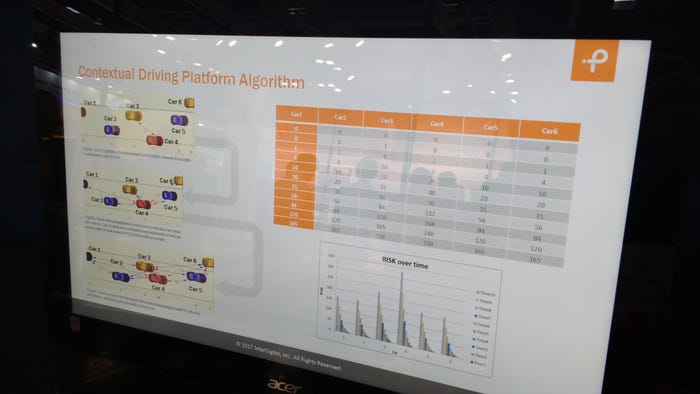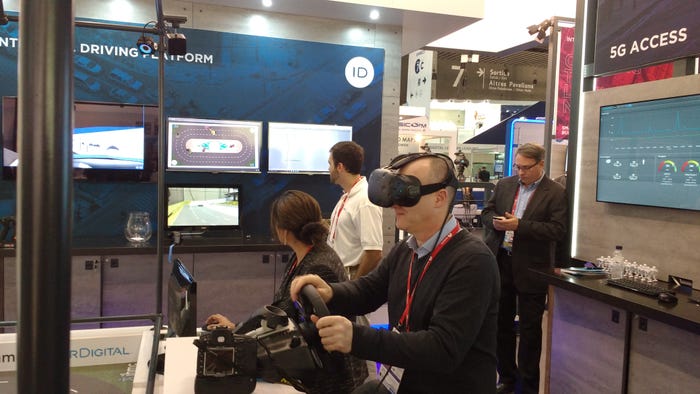Tech isn’t the issue for self-driving cars, we are – Interdigital
Autonomous vehicles are not far away from a grand entry into the real world, but there are still a couple of hefty hurdles to negotiate according to Interdigital.
February 27, 2017

Autonomous vehicles are not far away from a grand entry into the real world, but there are still a couple of hefty hurdles to negotiate according to Interdigital.
Over at Interdigital’s stand at MWC the team are taking on the next big challenge for autonomous vehicles; us. There is a huge amount of risk associated with self-driving vehicles but perhaps the biggest is one which cannot be fixed by technology. Sensors will become more advanced, connectivity will become more seamless and artificial intelligence will become more intuitive, but we will always be reckless.
By nature, humans are a risk. We’re unpredictable, emotional and erratic. And all of this can come across in the way we drive. Through its Contextual Driving Platform, the team are using virtual reality to better understand how we take to the roads.
By driving around a circular track, which is also populated by autonomous cars, data is collected and analysed to understand how good (or bad) we are at driving. The algorithm doesn’t only measure how fast we drive, or the angles we take corners, but also how we interact with other vehicles on the road. This information can be fed back into the AI platform to help autonomous vehicles better deal with us.
Your correspondent had a quick demo of the VR experience, and it wasn’t a pretty sight. Drivers are given a risk metric after a sixty second whizz around the track, a score out of 1000, to build a profile of that individual. Unfortunately, I received a score of 300, which apparently makes me a liability.
According to Serhad Doken, VP of Partner Development, humans are naturally aggressive drivers, much more so than autonomous vehicles, which causes a problem. The self-driving vehicles are able to communicate between themselves, but how do you deal with the humans. As long as there is a human on the road, driving will never be truly safe.
While the long-term ambition of the VR experience is to collect data to teach autonomous vehicles the drama of dealing with human drivers, there are also more immediate use cases as well. As the connected community becomes more prominent, and more of these experiences begin to appear, the profiles can be used by insurance firms to assess premiums for a range of drivers, especially new drivers who are an unknown entity to an industry which uses track records to make decisions. It’s the connected economy in action.
The future of autonomous vehicles depends partly on the progress of the technology, but also the information which is fed into the machine; AI is only as good as the data which is processes. For AI to be truly effective in this sense, much more of these initiatives are needed; data will define the success of the autonomous vehicle. In all fairness, autonomous vehicles are going to need a lot of help if my risk profile is anything to go by.


About the Author
You May Also Like





.png?width=300&auto=webp&quality=80&disable=upscale)




.png?width=300&auto=webp&quality=80&disable=upscale)


_1.jpg?width=300&auto=webp&quality=80&disable=upscale)